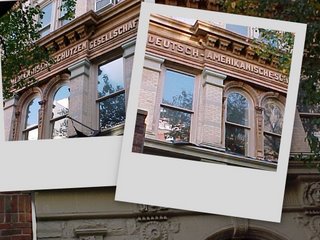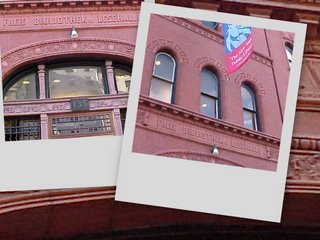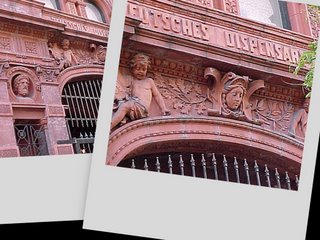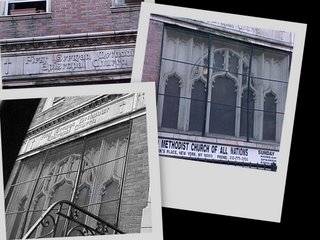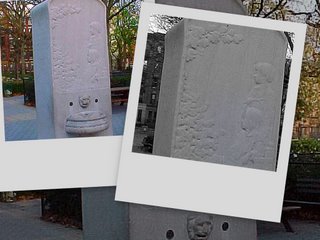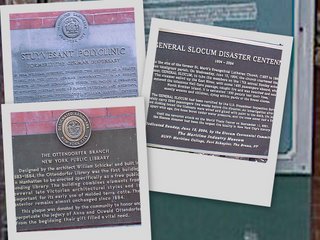who would have dreamed of such election results during the darkest hours after the 1994 electoral coup d’etat as both houses slid under gop control? i can never forget the shock—not to mention tears streaming down the faces—of chuck schumer, ruth messinger, david dinkins, and others at our “victory party.” how utterly depressing it was in the immediate days following in such “blue centers” as new york city.
what a relief to have been rid of santorum who has compared homosexuality to incest, bigamy and adultery, and supported un-intelligent “design” and privatization of social security. this is to say nothing of his role in the case of terry schiavo—irreversibly brain-damaged and beyond treatment. santorum needlessly involved himself in the painful decision of schiavo’s husband who sought to have her disconnected from a feeding tube—using such inflamatory language as "execution of the disabled." then, of course, there was santorum’s unsuccessful attempt to insert language into the every-child-left-behind bill in promotion of un-intelligent design—and questioning the academic standing of evolution in public schools! a steadfast member of the flat-earth society, santorum remains critical of 1965’s griswold vs. connecticut supreme court decision, which held that the u.s. constitution guaranteed right to privacy (within marriage), and on that basis, overturned a law that prohibited the sale and use of contraceptives.
new york: very interesting that one in five empire state republicans voted for hillary clinton, and one in three republicans voted for spitzer—allowing both to carry every region of the state: new york city, long island, upstate and the lower hudson valley. and to do so with nearly 70% of the vote! both also carried men and women and every race, age, income level and educational level. [2006 was the first election in many years in which democrats nationally won the majority—though slight—of male voters.] clinton managed to sidestep concerns of progressives in the party during the primary about her staking out centrist, if not conservative, positions on the issues (such as her support for making flag burning a crime)—that had led such bellwether democratic party organizations as village independent democrats, three parks independent democrats and gramercy stuyvesant independent democrats to endorse the anti-war campaign of labor organizer jonathan tasini.
california: how time changes things! when nancy pelosi ran in the special election to fill the seat of deceased rep. sala burton in 1987, i was appalled at her
narrow victory over left-wing (and openly gay) san francisco supervisor and harvey milk protégé harry britt. who would have thought that she would become the most powerful woman in our nation’s history? as to her ability to work with members of congress having differing ideologies, i point to her work after tiananmen square. she consistently cobbled together a coalition made up of congressional leftists and social/christian right conservatives to oppose most-favored-nation trading status for china.
iowa: in replacing retiring democratic governor tom vilsack (iowa’s first democratic governor since harold hughes’ tenure in the late 1960s/early 1970s), democratic secretary of state chet culver did so with 55%-44%. culver, 40, is the son of former u.s. senator john culver (who was defeated in the 1980 reagan debacle that also cost us senators george mcgovern, birch bayh, and frank church). meanwhile vilsack is exploring a presidential run. in the mid-90s i attended a dinner at manhattan’s tavern on the green restaurant that encouraged former iowans and graduates of that state’s many fine colleges to return there to fill jobs opening up in several sectors. vilsack—not to mention representatives of chambers of commerce from several iowa cities—listened intently to concerns of university-educated gay men and lesbians about leaving areas with non-discrimination protections for a state such as iowa which had none (with the exception of iowa city)—regardless of the economic opportunities there. as one chamber of commerce rep empathized: “why should you leave places such as new york and california where you have legal protection?” vilsack took these concerns to heart and issued a non-discrimination executive order—and met with strenuous opposition from the iowa legislature for doing so!
massachusetts: not only have bay staters elected deval patrick their first black governor (and the second elected black governor of any state after virginia’s wilder), but they have finally broken the chain of g.o.p. governors: william weld, paul cellucci, jane swift, and mitt romney.
ohio: ted strickland, who easily defeated ken blackwell, will become that state’s first democratic governor since dick celeste left office in 1991. celeste, known for steadfast commitment to appointment of pro-choice judges, was one of the first governors to issue an executive order banning discrimination on the basis of sexual orientation in state hiring. (pennsylvania’s milton schaap was the first.)
michigan: what a difference from 2002 when michigan voters threw democrat jennifer granholm into the lion’s den—electing her to the governorship with her hands tied and both houses of the state legislature in the hands of republicans. targeted by detergent millionaire dick devos, who dumped $35 million into his campaign, granholm will begin her second term as governor with a state house controlled by the democrats (by six seats) for the first time in years (and a state senate with increased democratic influence).
two of michigan's six house democrats are in line to head powerful committees: john dingell of dearborn will probably chair the house energy and commerce committee (involved with auto-related concerns) while detroit’s amazing john conyers is poised to lead the house judiciary committee. sen. carl levin, an opponent of the iraq war, is in line to become chairman of the senate armed services committee.
the reelection of senator debbie stabenow—who unseated bigot and santorum clone spencer abraham (whom dubya later named secretary of energy)—is especially sweet for me as she was a lansing area state legislator while i was a student at michigan state. dubbed by conservatives as the “welfare queen,” she has always been such a conscientious public servant. while working on her m.s.w. from state, she served on the ingham county board of commissioners—part of the time with commissioner extraordinaire mark grebner. (under that board, ingham became one of the first counties in the country to pass a sexual orientation nondiscrimination ordinance.) republican david brandon lost his bid to keep his seat on the university of michigan board of regents while republican eileen weiser lost her bid to return to the state board of education.
alas, with the good also comes the bad. micromanaging michigan voters also passed the constitutionally questionable (and hopefully constitutionally unsustainable) ballot proposal that would ban use of affirmative action on the basis of race and sex in universities and governments.
rumsfeld: if nothing else, we can rejoice in the departure of defense secretary donald rumsfeld, who has served in that job longer than anyone except the notorious robert mcnamara, architect of our tragic policy in vietnam that squandered tens of thousands of american lives. michael ratner, president of the center for constitutional rights, is pursuing an international war crimes case against rumsfeld for the latter's authorization of torture at guantanamo. despite robert gates' role at the cia in connection to the iran-contra scandal and secret arming of saddam hussein, he is likely to be confirmed by democratic senators.
living in new york city, where one is subjected not only to new york political ads but to those of new jersey and connecticut as well, it will be a relief not to hear the horrible attack ads by kean against menendez. as to the mealy-mouthed joe lieberman, my hat goes off to ned lamont for ruffling the crypto-republican's feathers and holding him accountable.
 movement research performance journal #30 magazine merits a good read with its spotlight on 2006-2007 bessie award winner and dance maker jennifer monson. the incisive interview by movement research board of directors president ishmael houston-jones brings to the fore this energizing presence during/veteran of the high tide of queer and anti-interventionist activism during reagan and bush i. monson’s words in mrpj so resonate to the core:
movement research performance journal #30 magazine merits a good read with its spotlight on 2006-2007 bessie award winner and dance maker jennifer monson. the incisive interview by movement research board of directors president ishmael houston-jones brings to the fore this energizing presence during/veteran of the high tide of queer and anti-interventionist activism during reagan and bush i. monson’s words in mrpj so resonate to the core: